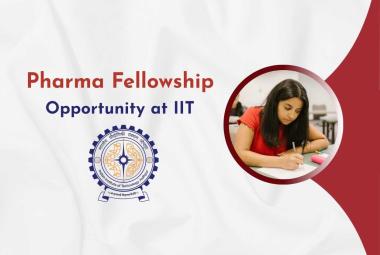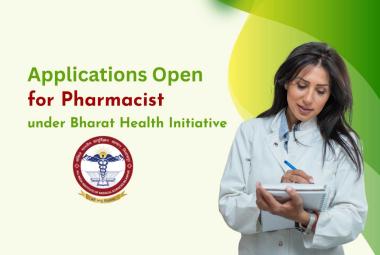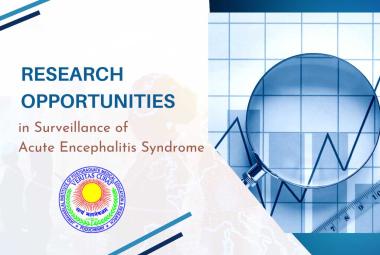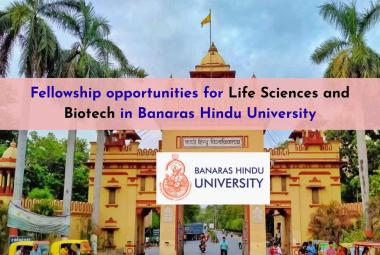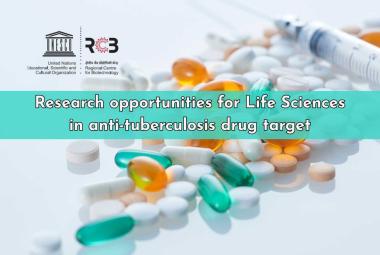{ DOWNLOAD AS PDF }
ABOUT AUTHORS
Arulanandraj. N*, Dhivya. S, DR. V. Gopal
Department of Pharmaceutical Analysis,
Mother Theresa Post Graduate and Research Institute of Health Sciences,
Gorimedu, Puducherry-605006, India
*dhivyaraji310@gmail.com
ABSTRACT
Herbal medicines have been used for several years throughout the world. Especially in India, herbal medicines are in high demand. Utilization of herbal medicines has increased because of their ability to treat various diseases with lesser side effects. The development of novel herbal formulations are reported to have remarkable advantages over respective crude drugs preparations or extracts which includes enhancement of solubility, bioavailability, protection from toxicity, enhancement of pharmacological activity, reduction in dose, enhancement of stability, improved tissue distribution, sustained delivery and protection from physical and chemical degradation. The herbal nanoparticles are colloidal system with herbal particles varying in size from 1 to 1000 nm. The objective of this review article is to summarize the drawbacks of some conventional herbal formulations and the advantages of novel herbal formulations.
[adsense:336x280:8701650588]
Reference Id: PHARMATUTOR-ART-2581
|
PharmaTutor (Print-ISSN: 2394 - 6679; e-ISSN: 2347 - 7881) Volume 6, Issue 5 Received On: 09/03/2018; Accepted On: 16/03/2018; Published On: 01/05/2018 How to cite this article: Arulanandraj N, Dhivya S, Gopal V; A review on Herbal Nanoparticles; PharmaTutor; 2018; 6(5); 32-37; http://dx.doi.org/10.29161/PT.v6.i5.2018.32 |
INTRODUCTION:
Since ancient times, herbal medicines have been widely used worldwide for their better therapeutic values and fewer adverse effects as compared to modern medicines (Goyal et al., 2011; Thakur et al., 2011). Due to the lack of scientific justification and processing difficulties, herbal medicines were not considered for the development of novel formulations for a long period of time. But now, the modern phyto-pharmaceutical research can solve the scientific needs of herbal medicines in developing novel drug delivery systems (microspheres, nanoparticles, matrix system, liposomes, solid lipid nanoparticles, etc.). In most of the conventional dosage forms, only a limited amount of administered dose reaches the targeted site, while the majority of the drugs get distributed throughout the body depending on physicochemical and biochemical properties resulting in low therapeutic effect (Kumar et al., 2012; Sharma et al., 2011). The main advantage of novel drug delivery systems (NDDS) includes targeted drug delivery, which reduces dosage frequency, increases the solubility and absorption whereas decreases elimination (Yadev et al., 2011). Among all the NDDS, Nanoparticles is considered to be an important drug delivery system.
Nanoparticles:
Nanoparticles are sub-nanosized colloidal structures composed of synthetic or natural polymers varying in size from 1-1000nm. The drug is dissolved, entrapped, encapsulated or attached to a nanoparticle matrix. Depending upon the method of preparation, nanoparticles can be of nanospheres or nanocapsules. Nanocapsules are systems in which the drug is confined to a cavity surrounded by a unique polymer membrane, while nanospheres are matrix systems in which the drug is physically and uniformly dispersed (Peer et al., 2007). The nanocarriers are made of safe materials, including synthetic biodegradable polymers, lipids and polysaccharides (Singh et al., 2011).
Nanocarriers:
A nanocarrier is nanomaterial mainly used as a transport module for another substance, such as a drug. Commonly used nanocarriers include micelles, polymers, carbon-based materials, liposomes and other substances. Nanocarriers are currently used in drug delivery and their unique characteristics demonstrate potential use in chemotherapy. Nanocarriers include polymerconjugates, polymeric nanoparticles, lipid-based carriers, dendrimers, carbon nanotubes, and gold nanoparticles. Lipid-based carriers include both liposomes and micelles. Examples of gold nanoparticles are gold nanoshells and nanocages. Different types of nanomaterial being used in nanocarriers allows for hydrophobic and hydrophilic drugs to be delivered throughout the body (Gupta et al, 2010). Since the human body contains mostly water, the ability to deliver hydrophobic drugs effectively in humans is a major therapeutic benefit of nanocarriers. Micelles are able to contain either hydrophilic or hydrophobic drugs depending on the orientation of the phospholipids molecules. Moom et al., (2012) developed multi drug delivery system by utilizing titania nanotube arrays which was used for delivery of both hydrophobic and hydrophilic drugs. One potential problem with nanocarriers is unwanted toxicity from the type of nanomaterial being used. Inorganic nanomaterial can also be toxic to the human body if it accumulates in certain cell organelles. Protein based nanocarriers are one of the promising drug and gene delivery system, since they occur naturally, and generally demonstrate less cytotoxicity than synthetic molecules (Elzoghby et al., 2012).
Need of the nanoparticles in herbal remedies:
Herbal nanoparticles was selected to overcome the drawbacks of the traditional herbal drugs because of the following reasons (Ansari et al., 2012):
• Nanoparticles can be used to target the herbal medicine to individual organ which improves the selectivity, drug delivery, effectiveness and safety.
• Nanoparticles can be utilized to increase the herbal drug solubility and help to localize the drug in a specific site thus resulting in better efficacy (Sharma, 2014).
• Nanoparticles can deliver high concentrations of drugs to disease sites because of their unique size and high loading capacities.
• Delivering the drug in small particle size enhances the entire surface area of the drugs therefore allocating quicker dissolution in the blood.
• Shows enhanced permeation and retention effect, i.e., enhanced permeation through the barriers because of the small size and retention due to poor lymphatic drainage (Chidambaram et al., 2012).
• Exhibits passive targeting to the disease site of action without the addition of any particular ligand moiety.
• Decreases the side effects.
Herbal nanoparticle formulations:
Artemissia annua: Artemissia annua is a single stemmed annual herb of family Asteraceae. Artemisinin is the active principle of Artemissia annua (Chen et al., 2009). It has the potent antimalarial action. Due to its poor pharmacokinetic properties and short halflife, its clinical application is restricted. The nano-coated artemisinin have been developed to overcome the problems associated with artemisinin. These nanocapsules dispersed well in aqueous solutions and hydrophilicity of artemisinin crystals were also improved after encapsulation (Sathyavathi et al., 1989).
Berberine:
Berberine, a naturally occurring isoquinoline alkaloid present in the roots, rhizome and stem bark of number of medicinal plants such as Berberis vulgaris L.(Family- Berberidaceae) , Hydrastis Canadensis L.(Ranunculaceae), Phellodendron amurense (Rutaceae), Coptis chinensis (Ranunculaceae) and Tinospora cordifolia (Menispermaceae). Berberine has tremendous potential to cure many physiological disorders (Fukuda et al., 1999). Moreover, the anti-tumor properties of berberine have been achieved on human malignant brain tumor , esophageal cancer, human leukemic and colon cancer cell lines; (Roy et al., 2005; Reichard et al., 2007). Berberine loaded nanoparticles are successfully prepared using single emulsion, multiple emulsion and ionic gelation methods for sustained drug release.
Centella asiatica:
A small herbaceous creeping plant, Centella asiatica (L.) Urban. (Family- Apiaceae) has wide range of pharmacological applications such as anxiolytic (Bradwejn et al; 2000), anti- anxiety (Lucia, 1997), antioxidant (Kumar, 2002). It is also used for the treatment of leprosy, wounds, cancer, fever, allergy and syphilis (Van Wyk, 1997). Centella asiatica extract (CAE) possesses high potential biological activities; its clinical usage is limited to some extent due to its physical instability. CAE (powder extract)shows high hygroscopicity. Therefore, the development of nanoparticles in which the extract is entrapped inside could protect it from external moisture. Chitosan- alginate nanoparticles of CAE has been prepared by ionic gelation method . Nano encapsulation of CAE provided physical stability compared to its extract alone (Okonogai et al., 2008).
Curcumin: Curcumin, a hydrophobic polyphenol (diferuloyl methane) is a potent phytomolecule obtained from turmeric (Curcuma longa, Family-Zingiberaceae) has a wide range of biological activities (anticancer, anti-inflammatory, antioxidant, antiviral, antibacterial, antifungal,etc) (Kiuchi et al., 1993; Sharma et al., 2012). But its clinical application was limited due to its short half life (Anand et al., 2007), poor water solubility, rapid metabolism and rapid elimination which ultimately results in poor bioavailability upon oral administration. Nanoparticle-based drug delivery approaches have potential for rendering hydrophobic properties of curcumin. Nanoparticles of curcumin have been prepared by a process of wet milling technique. Unlike curcumin, nanocurcumin is freely dispersible in water (Bisht et al., 2007).
Danshen: Danshen, a dried roots of Salvia miltiorrhiza L(Family- Lamiaceae), are widely used as medicines for promoting circulation and improving blood stasis. Danshen is extensively used for the treatment of coronary heart disease, cerebrovascular diseases and hyperlipidemia (Zhou et al., 2006; Kang et al., 2004). Slow pharmacological action is the major drawback of this herbal drug. Nano-coated Salvia miltiorrhiza exhibits stronger antioxidant property and the release was much faster than the traditionally powered samples (Liu et al., 2008). Phospholipids complex loaded nanoparticles also enhanced oral bioavailability (Peng et al., 2008).
Dodder: Dodder is obtained from a parasitic plant, Cuscutta chinensis Lam. (Family- Convolvulaceae). The major chemical constituents are flavanoids and lignans. Its pharmacological activities include anti-cancer (Nisha et al., 1986; Umehara et al., 2004), anti-aging (Liu et al., 2003) and immune-stimulatory effects (Bao et al., 2002). Its absorption upon oral administration could be limited due to its poor aqueous solubility. Nanoparticles of Cuscutta chinensis have been developed by nano-precipitation method (Yen et al., 2008). Compare to ethanolic seed extract, nanocoated Cuscutta chinensis exhibits higher heptoprotective and antioxidant activities at lower concentration.
Genistein: Genistein, a isoflavone, is a primary active component of soyabean, scoparius and other leguminous plants. It is a phytoestrogen (Rusin et al., 2010) and antioxidant (Lamartinicr et al., 1998). It also has the ability to decrease the risk of osteoporosis, cardiovascular diseases, breast and uterine cancer (Usui, 2006). Its clinical application is decreased due to its low aqueous solubility and poor bioavailability (Cassidy et al., 2006). Thus the formulation of genistein nanoparticles improve its solubility and bioavailability by nano-precipitation method (Hua-Yan et al., 2010). It was found that genistein loaded nanoparticles possessed higher (241.8%) relative bioavailability compared to genistein alone (Tang et al., 2011) .
Murva: Murva is a controversial drug, obtained from many medicinal plants such as Marsdenia tenacissima (Roxb) Moon (Asclepiadaceae), Clematis triloba (Ranunculaceae), Sansevieria zeylanica (Roxb) (Agavaceae), Helicteres isora Linn. (Sterculiaceae), Chonemorpha macrophylla (Apocyanaceae), Bauhinia tomntosa Linn. (Caesalpinaceae) and Maerua oblongifolia (Capparaceae). It has the potential to treat diseases like anaemia, fever, diabetes, stomach disorders, typhoid, urinary infection and cough (Kolammal, 1978). Due to its low aqueous solubility and poor bioavailability, its use is limited in clinical application. Thus to increase its solubility and bioavailability, it is formulated as nanoparticles.
NOW YOU CAN ALSO PUBLISH YOUR ARTICLE ONLINE.
SUBMIT YOUR ARTICLE/PROJECT AT editor-in-chief@pharmatutor.org
Subscribe to Pharmatutor Alerts by Email
FIND OUT MORE ARTICLES AT OUR DATABASE
Paclitaxel: Paclitaxel is a major anticancer drug isolated from the bark of Taxus brevifolia Nutt. (Family- Taxaceae). But its high lattice energy results in very limited aqueous solubility (0.7- 30 ug/ml-1) limited its efficacy (Spencer et al., 1994). Thus incorporation of paclitaxel into nanoparticles enhanced its anti- tumoral activity (Breuning et al., 2008). Paclitaxel loaded nanoparticles were prepared by nanoprecipitation method (Fessi et al., 1989) and by sequential simplex optimization method (Dong et al., 2009). Paclitaxel nanoparticles enhance drug stability, support sustained drug release and improve bioavailability.
Quercetin: Quercetin is a flavonoid excreted from air dried plant part of Spohora japonica L. (Family- Fabaceae) mainly from bark and leaf. The antioxidant activity of Quercetin is higher than well known antioxidants like ascorbyl, trolox (Nuengchamanong et al., 2004). Apart from the antioxidant activity, it shows anticancer and antiviral activities (Formica et al., 1995; Schaab et al., 2006; Zheng et al., 2005). Inspite of this wide spectrum of pharmacological properties, its use in pharmaceutical field is limited due to its low aqueous solubility and instability in physiological medium results in poor bioavailability (Prasad et al., 2004). The nano-encapsulation of Quercetin into PLA (poly-D, L-lactide) nanoparticles significantly improves the therapeutic efficacy and bioavailability. Quercetin loaded PLA (poly-D, L-lactide) nanoparticles have been prepared by solvent evaporation method (Kumar et al., 2010) and by using bovine serum albumin (Fang et al., 2011).
CONCLUSION
At present, herbal medicines have been getting more attention because of their potential to treat almost all diseases. However, several problems (poor solubility, poor bioavailability, low oral absorption, instability and unpredictable toxicity) associated with herbal medicines limit their use. In order to overcome such problems, “Nanotechnology” has established the attractive therapies to the pharmaceutical that will encounter the problem associated with herbal medicines. It is anticipated that the effectual and valuable relevance of the natural products and herbal remedies being applied with the nanocarrier will enhance the significance of existing drug delivery systems.
REFERENCES:
REFERENCES:
1. Anand P, Kunnumakkara AB, Newman RA. Bioavailability of Curcumin: Problems and Promises, Mol Pharmaceutics, 2007; 4 (6):807-818.
2. Ansari SH, Farrha I, Sameem M: Influence of nanotechnology on herbal drugs: A Review. Journal of advanced pharmaceutical technology and research 2012; 3(3): 142.
3. Bao X, Wang Z, Fang J and Li X, Structured features of an immunostimulating and antioxidant acidic polysaccharide from the seeds of Cuscutta chinensis, Planta Med, 2002, 8, 237-243.
4. Bisht S, Feldmann G, Soni S, Ravi R, Karikar C and Maitra A, Polymeric nanoparticles-encapsulated curcumin (nanocurcumin): a novel strategy for human cancer therapy, J Nanobiotechnol, 2007, 5(3), 2-18.
5. Bradwejn JT, A double blind, placebo controlled study on the effects of Gotu Kola- (C. asiatica) on acoustic startle response in healthy subjects, J Clinic Pharmacol, 2000, 20, 680-84.
6. Breuning M, Bauer S and Goepferich A, Polymers and Nanoparticles: intelligent tools for intracellular targeting, Eur J Pharm Biopharm, 2008, 68, 112-128.
7. Cassidy A, Albertazzi P and Lisc Nielsen I, Critical review of health effects of soyabean phyto-estrogen in post-menopausal women, Proc Nutr Soc, 2006, 65, 76-92.
8. Chen Y, Lin X, Park H and Greever R, Study of artemisinin nanocapsules as anticancer drug delivery systems, Nanomedicine: Nanotechnol, Biol Med, 2009,3, 316-322.
9. Chidambaram M, Manavalan R, Kathiresan K: Nanotherapeutics to overcome conventional cancer chemotherapy limitations. Journal of pharmacy and pharmaceutical sciences 2012; 14: 67–77.
10. Dong X, Mattingly CA, Tseng M, Cho M, Adams VR and Mumper RJ, Development of new lipid based paclitaxel nanoparticles using sequential simplex optimization, Eur J Pharm Biopharm, 2009, 72(1), 9-17.
11. Elzoghby A, Samy W, Elgindy N: Protein-based nanocarriers as promising drug and gene delivery systems. Journal of controlled release 2012; 161(1):38-49.
12. Fang R, Hao R, Wu X, Li Q, Leng X and Jing H, Bovine serum albumin nanoparticles promotes the stability of quercetin in simulated intestinal fluid, J Agri Food Chem, 2011, 59, 6292-6298.
13. Fessi H, Puisieux F, Devissaguet JP, Ammoury N and Benita S, Nano-capsule formation by interfacial polymer deposition following solvent displacement, Int J Pharm, 1989, 55, 1-4.
14. Formica JV, Regelson W, Review of the biology of quercetin and related bioflavonoids, Food Chem Toxicol, 1995, 33, 1061-1080.
15. Fukuda K, Hibiya Y and Mutoh M, Koshiji M, Akao S and Fujiwara H, Inhibition of activation protein 1 activity by berberine in human hepatoma cells, Planta Med,1999, 65, 381-383.
16. Gleave M, Bruchovsky N, Goldenberg SL and Rennie P, Intermittent androgen suppression for prostate cancer: rationale and clinical experience, Eur Urol, 1998, 34, 37-41.
17. Goyal A, Kumar S, Nagpal M, Singh I, Arora S. Potential of novel drug delivery system for herbal system for herbal drugs. Indian journal of pharmaceutical education and research. 2011; 45:225-235.
18. Gupta VK, Karar PK, Ramesh S, Misra SP, Gupta A: Nanoparticle formulation for hydrophilic and hydrophobic drugs. International journal of research in pharmaceutical sciences 2010; 1:163-69.
19. Hua-Yan, Li, Dng-Peng, Wang, Tian-Ming, Zhang, Hao-Li, Ren, Fang-Yuan, Xu, Zhu-Guo and Zhao, J Nanosci Nanotechnology, 2010, 10(4), 2325-2331.
20. Kang DG, Oh H, Sohn EJ, Hur TY, Lee KC, Kim KJ, Kim TY and Lee HS, Lithospermic acid B isolated from Salvia miltiorrhiza ameliorates ischemia/ reperfusion-induced renal injury in rats, Life Sci, 2004, 75, 1801-1816.
21. Kiuchi F, Goto Y, Sugimoto N, Akao N, Kondo K, Tsuda Y. Nematocidal activity of turmeric: synergistic action of curcuminoids. Chem Pharm Bull (Tokyo) 1993;41:1640.
22. Kumar A, Yadev SK, Pakade YB, Singh B and Yadev SC, Development of biodegradable nanoparticles for delivery of quercetin, Colloids and Surface B, Biointerfaces, 2010, 15, 184-192.
23. Kumar K, Rai AK. Miraculous therapeutic effects of herbal drugs using novel drug delivery systems. International Research Journal of Pharmacy. 2012; 3:2733.
24. Kumar M H V, Effect of different extracts of Centella asiatica on cognition and markers of oxidative stress in rats, J Ethnopharmacol, 2002, 79, 253-60.
25. Kolammal M. Pharmacognosy of Ayurvedic Drugs, series-1. Trivandrum: Ayurveda Research Institute, 1978: p.1.
26. Lamartinicr CA, Murill WB and Manzolillo PA, Genistein alters the ontogeny of mammary cancer in rat, Pro Soc Exp Biol Med, 1998, 217, 358-364.
27. Liu JR, Chen GF, Shih HN and Kuo PC, Enhanced antioxidant bioactivity of Salvia miltiorrhiza (Danshen) products prepared using nanotechnology, Phytomedicine, 2008, 15, 23-30.
28. Liu JH, Jiang B, Bao YM and An LJ, Effect of Cuscutta chinensis glycoside on the neuronal differentiation of rat pheochromocytoma PC12 cells, Intern J Developm Neurosc, 2003, 21, 277-281.
29. Lucia RD, Pharmacological and toxicological studies on Centella asiatica, Fitoterapia, 1997,68,413-16.
30. Moom A, Jonas A, Losic D: A multi-drug delivery system with sequential release using titania nanotube arrays. Chemical communications 2012; 48:3348-50.
31. Nisha M, Akbar S, Tariq M and Hussain Z, Effect of Cuscutta chinensis water extract on 7, 12-dimethylbenz a anthracene- induced skin papillomas and carcinomas in mice, J Ethnapharmacol, 1986, 18, 21-31.
32. Nuengchamanong N, Lokkerbol HA and Ingkaninan K, Separation and detection of the antioxidant flavonoids, rutin and quercetin, using HPLC coupled on-line with colorimetric detection of antioxidant activity, Naresuan Univ J, 2004, 12, 25-37.
32. Okonogai S, Sirithunyalang J and Chen U, Nanoencapsulation of Centella asiatica bioactive extract, In: XVIth International Conference on Bioencapsulation, Dublin, Ireland, 2008, Sep 4-6, p.1-4.
34. Peer D, Karp JM, Hong S, Farokhzad OC, Margalit R and Langer R, Nanocarriers as an emerging platform for cancer therapy. Nat. Nanotechnol. 2007, 2, 751-760.
35. Peng Q, Tao G, Jiao Z, Jie L, Dong Z and Zhirong Z, Enhanced the oral bioavailability of savianolic acid B by phospholipid complex loaded nanoparticles, Die Pharmazie(IJPS), 2008, 63, 661-666.
36. Prasad T and Rajendra kumar K, Study of freeze dried quercetin- cyclodextrin binary systems by DSC, FT-IR, X-ray diffraction and SEM analysis, J Pharm Biomed Anal, 2004, 34, 333-339.
37. Reichard P, Nielsen OS, Bauer S, Hartmann JT, Schoffski P, Christensen TB, Exatecan in pretreated adult patients with advanced soft tissue sarcoma: result of a phase-II. A study of EORTC soft tissue and bone sarcoma group, Euro J Cnacer, 2007,43,1017-1022.
38. Roy AM, Baliga MS, Elmets CA and Katiyar SK, Grape seed proanthocyanidins induce apoptosisthrough p53, Bax, and caspase-3 pathways, Neoplasia, 2005,7,24-36.
39. Rusin A, Krawezyk Z, Grynkiewicz G, Gogler A, Zawisza-Puchalka J of genistein, their properties and possible application, Acta Biochim Pol, 2010, 57, 23-34.
40. Sathyavathi G V, Gupta AK and Tandon N, Medicinal Plants of India, Vol. 2, New Delhi(India), Indian Council OF Medical Research, 1987, 230-239.
41. Schaab MR, Barney BM and Francise WA, Kinetiv and spectroscopic studies on the quercetin 2,3-dioxygenase from Bacillus subtilis, Biochemistry, 2006, 45, 1009-1016.
42. Sharma AT, Mitkare SS, Moon RS. Multicomponent Pharmaceutical Science Review and Research. 2011; 6:185-187.
43. Sharma K, Agrawal SS, Gupta M. Development and validation of uv spectrophotometric method for the estimation of curcumin in bulk drug and pharmaceutical dosage forms. Int J drug dev res, 2012; 4(2): 375-380.
44. Sharma M: Applications of Nanotechnology Based Dosage Forms for Delivery of Herbal Drugs. Research and Reviews: Journal of pharmaceutics and nanotechnology 2014; 2(1).
45. Singh RP, Singh SG, Naik H, and Jain D, Bisla S: Herbal excipients in novel drug delivery system. International journal of comprehensive pharmacy 2011; 2:1-7.
46. Spencer CM and Faulds D, Paclitaxel- a review of its pharmacodynamic and pharmacokinetic properties and therapeutic potential in the treatment of cancer, Drugs, 1994, 48, 794-847.
47. Tang J, Xu N, Ji H, Liu H, Wang Z and Wu L, Eudragit Nanoparticles containing genistein: formulation, development and bioavailability assessment, Int J Nanomed, 2011, 6, 2429-2435.
48. Thakur L, Ghodasra U, Patel N, Dabhi M. Novel approaches for stability improvement in natural medicines. Pharmacognosy Reviews. 2011; 5:48-54.
49. Umehara K, Nemoto K, Ohkubo T, Miyase T, Degaw M and Noguchi H, Isolation of a new 15-membered macrocyclic glycolipid lactone, Cuscutic Resinoside from the seeds of Cuscutta chinensis; a stimulator of breast cancer cell proliferation, Planta Med, 2004, 70, 299-304.
50. Usui T, Pharmaceutical prospects of phytoestrogens, Endocr J, 2006, 53, 7-20.
51. Van Wyk B E, Medicinal Plants of South Africa, Briza Publications, Pretoria, 1997, 78-79.
52. Yadev D, Suri S, Choudhary AA, Sikender M, Heman, Beg MN et al. Novel approach, herbal remedies and natural products in pharmaceutical science as nano drug delivery systems. International Journal of Pharm Tech Research. 2011; 3(3):3092-3116.
53. Yen FL, Wu TH, Lin L, Cham TM and Lin CC, Nanoparticles formulation of Cuscutta chinensis prevents acetaminophen-induced hepatotoxicity in rats, Food Chem Toxicol, 2008, 46,1771-1777.
54. Zheng Y, Hasworth IS, Zuo Z, Chow MS and Chow AH, Physicochemical and structural characterization of quercetin- beta-cyclodextrin complexes, J Pharm Sci, 2005, 94, 1079-1089.
55. Zhou L, Chow M and Zhou Z, Improved quality control method for Danshen products – consideration of both hydrophilic and lipophilic active componenets, J Pharm Biomed Anal, 2006, 41, 744-750.
NOW YOU CAN ALSO PUBLISH YOUR ARTICLE ONLINE.
SUBMIT YOUR ARTICLE/PROJECT AT editor-in-chief@pharmatutor.org
Subscribe to Pharmatutor Alerts by Email
FIND OUT MORE ARTICLES AT OUR DATABASE



